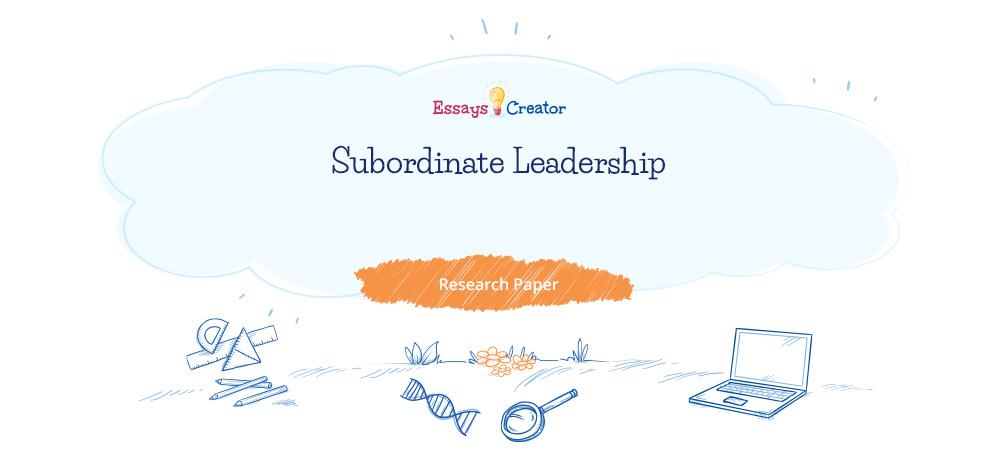
Subordinate Leadership Free Essay
Introduction
The concept of leadership stretches beyond the confines of time and geographical locations. Leadership has been conceptualized popularly as the ability of a person to influence a group of people to achieve a particular goal. Subordinate leadership entails a bottom-top type of leadership. This kind of leadership is achieved by knowing and studying people with positions and power while making them follow the leader in promoting his cause. This is the art of persuasion in working from below upwards. This leadership also entails the matching up of the proposal in a way that will convince the person above the leader regarding authority and power. In doing so, you will be leading hence they will exercise their powers according to your undertakings. Subordinate leadership allows the subordinate to create followership from people with power and authority and in turn, helps the subordinate to achieve the desired objectives.
Discussion
To ensure the success of this leadership, there is the need to watch, listen, and read people with authority, and apply imagination to their probable longings and wants. After satisfying their needs, there is the likely hood of them assisting in achieving things the individual could not have done. There exists acknowledgment in extant literature that there is a strong relationship between policy implementation in public agencies and the kind of leadership style. The managerial effectiveness within the public agency can be attributed to the influence and the power of subordinates (Jonas, 2004). Subordinate leadership is paramount in running the public agency in that it takes into consideration the impact of situational constraints that may arise on the path of those with higher power and positions. In this regard, this kind of leadership can recognize and deal with role demands that are related to the level of leaders and the expectations of those higher in ranks.
Order your Research Paper help today!
According to Ashworth (2001), subordinate leadership is crucial in the relationship between those with authority and their subordinates hence the capability of accepting the opinions and views of the junior staff. Without some degree of strong subordinate and the application of this kind of leadership, it will be hard for the public agencies to implement policies that concern the opinions of those under the jurisdiction. To ensure the smooth running of the public agency, subordinate leadership brings the notion of togetherness and ensures that leadership does not run only from top to bottom.
The ideas relayed by the subordinates should also be considered hence influencing the people with power and authority into reconsidering what ought to be integrated into the public agency. A study, done by Kouzes and Posner (2010), states that the best leaders are always the best learners. This excerpt proves the importance of subordinate leadership within an agency in that the junior staff can convince the senior to accept his or her proposal in quest of achieving a particular objective. For a public office or an agency, to accommodate the diverse needs of the citizen, leaders should have a passion to learn from their subordinates; and this will open new experiences in feedback relaying and policy implementation. Subordinate leadership is useful in running a public agency from the aspect that it instills the norm of a growth mindset in those in the subordinate offices and the managers.
Conclusion
Most leadership styles, discussed in different books and journals, support the top-bottom leadership style. Contrary to this, subordinate leadership entails bottom-up leadership which is characterized by the practice of deliberate consistency in the improvement of public agencies. It is also evident in this kind of leadership that feedback on results should always be accompanied by a proposal and satisfaction to those with authority and power. Leading at the subordinate level can be challenging but with supportive managers; it can be easier and more productive hence achieving the desired organization’s vision.

